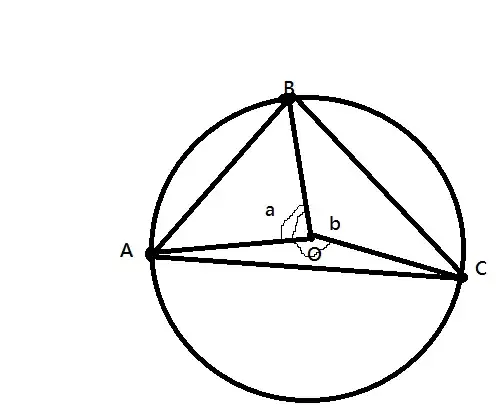Assume without loss of generality that the affixes of $A$, $B$ and $C$ are $\mathrm e^{\mathrm iu}$, $1$ and $\mathrm e^{\mathrm iv}$ with $u$ and $v$ in $(-\pi,\pi)$, and let $O$ denote the center of the circle. The triangles $BOA$ and $BOC$ are isocele hence the angles $\angle OBA$ and $\angle OBC$ are $\frac12\pi-\frac12u$ and $\frac12\pi-\frac12v$. In particular the angle $\angle ABC$ is $\frac12(u-v)$.
The nonoriented angle at $B$ is $\frac12|u-v|$ in $(0,\pi)$ with $u$ and $v$ i.i.d. uniform in $(-\pi,\pi)$ hence its distribution has density $\frac2{\pi^2}(\pi-\theta)$ on $0\leqslant \theta\leqslant\pi$. In other words, the probability that this angle is at least $(1-a)\pi$ is $a^2$, for every $0\leqslant a\leqslant 1$.
Edit: A simple approach to the CDF is to note that, after dividing everything by $\pi$, one looks for the distribution of $t=|x-y|$ where the random point $(x,y)$ is uniform in the square $[0,1]^2$.
For every $0\leqslant r\leqslant 1$, the event $[t\geqslant r]$ corresponds to $(x,y)$ falling into the triangle with vertices $(r,0)$, $(1,0)$ and $(1,1-r)$, or into the triangle with vertices $(0,r)$, $(1-r,1)$ and $(0,1)$. Each triangle is half of a square with side $1-r$ hence the sum of their areas is $(1-r)^2$. The PDF of the angle normalized by $\pi$ is minus the derivative of this, that is, $2(1-r)$.
